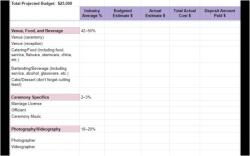What is react JS good for?
React.js, commonly referred to as React, is a popular JavaScript library for building user interfaces, particularly for single-page applications where the user interacts with the page, and the content dynamically updates without requiring a full page reload. Here are some key applications and functionalities of React.js:
User Interfaces (UIs) for Web Applications:
- React is widely used for building interactive and dynamic user interfaces on the web. It helps in creating reusable UI components that efficiently update when the underlying data changes.
Single-Page Applications (SPAs):
- React is well-suited for building SPAs where a user can navigate through different views without the need for full page reloads. React's virtual DOM (Document Object Model) efficiently updates only the parts of the page that have changed, leading to a smoother user experience.
Reusable Components:
- React promotes the creation of reusable UI components. These components encapsulate specific pieces of functionality and can be reused across different parts of an application, making the codebase modular and maintainable.
Declarative Syntax:
- React uses a declarative syntax, making it easier to understand and reason about the application's state. Developers describe how the UI should look based on the application's state, and React takes care of updating the DOM efficiently.
Efficient DOM Updates with Virtual DOM:
- React uses a virtual DOM to optimize rendering. Instead of updating the actual DOM for every change, React creates a virtual representation of the DOM in memory and updates only the necessary parts. This minimizes DOM manipulation and improves performance.
React Native for Mobile App Development:
- React Native, an extension of React, allows developers to build mobile applications using React principles. It enables the development of cross-platform mobile apps with a single codebase, reducing the effort required for maintaining separate code for iOS and Android.
State Management:
- React provides a mechanism for managing the state of an application. By using components with state, developers can build interactive and dynamic interfaces that respond to user input.
Community and Ecosystem:
- React has a large and active community, which means extensive documentation, a plethora of third-party libraries, and a wealth of resources for developers. This ecosystem makes it easier to find solutions to common problems and accelerates development.
Server-Side Rendering (SSR) and SEO:
- React can be used for server-side rendering, which improves the initial page load time and enhances search engine optimization (SEO) by providing search engines with a fully rendered HTML page.
Integration with Other Technologies:
- React can be easily integrated with other libraries and frameworks. For example, it's commonly used with state management libraries like Redux and data-fetching libraries like Axios.
React's flexibility, efficiency, and emphasis on component-based development make it a powerful tool for building modern, interactive user interfaces for web and mobile applications.
Core strengths of React JS: building dynamic and reusable user interfaces
React JS is a JavaScript library for building user interfaces. It is known for its component-based approach, which allows developers to create reusable and maintainable code. React JS also has a declarative nature, which makes it easy to write code that is easy to understand and maintain.
React JS's declarative nature and its impact on code maintainability
The declarative nature of React JS means that developers describe the desired state of the UI, and React JS figures out how to update the UI to match that state. This makes the code much easier to read and understand, as it is not necessary to write code that explicitly updates the UI. This also makes the code more maintainable, as it is easier to track down bugs and make changes.
Virtual DOM and its role in optimizing React JS performance
React JS uses a virtual DOM to optimize performance. The virtual DOM is a representation of the real DOM in memory. When a component's state changes, React JS updates the virtual DOM, and then it only updates the real DOM if the changes are visible to the user. This can significantly improve performance, especially for applications with complex UIs.
React JS's rich ecosystem of tools and libraries, including React Router and Redux
React JS has a rich ecosystem of tools and libraries that make it even more powerful. Some of the most popular tools and libraries include:
- React Router: A library for routing in React JS applications.
- Redux: A library for managing state in React JS applications.
- Reactstrap: A library for building Bootstrap components with React JS.
- Material-UI: A library for building Material Design components with React JS.
Adaptability of React JS for mobile and cross-platform development
React JS can be used to develop mobile applications using React Native, a framework that allows developers to write React code that can be compiled to native iOS and Android apps. React JS can also be used to develop cross-platform web applications using libraries like Create React App and Next.js.
These core strengths make React JS a popular choice for developing user interfaces for a wide range of applications.













